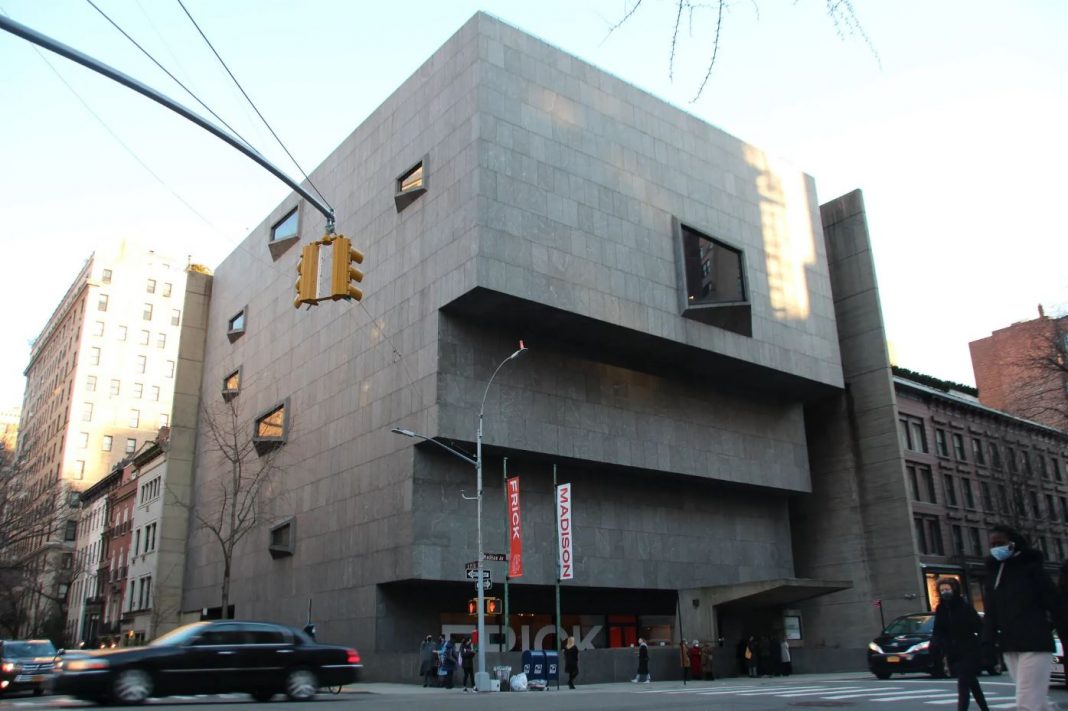Sotheby’s said on Thursday that it had bought the Whitney Museum of American Art’s 1966 Brutalist structure by Marcel Breuer on Madison Avenue and would relocate its offices there from York Avenue in 2025, confirming rumours that have been circulating in the art community this spring.
Two unnamed sources familiar with the agreement estimated the acquisition price of the Breuer building to be about $100 million but were not authorised to speak publicly about it.
Sotheby’s CEO Charles F. Stewart termed the Breuer building “a once in a lifetime opportunity that we couldn’t pass up,” adding that “the location couldn’t be more ideal for our client base” to see art, attend auctions and meet with experts.
The Whitney’s new Renzo Piano-designed headquarters has twice the display area of the Breuer and a more approachable and friendly appearance, according to Weinberg, who expects to leave down next autumn after 20 years as director.
Sotheby’s sees the Breuer as a chance to upgrade from its current position on York Avenue and move closer to the centre of the Upper East Side art market, which is home to major galleries such as Gagosian, Mnuchin, and Acquavella as well as a growing number of emerging galleries. Sotheby’s exhibits, especially its pre-auction previews, which enable members of the public to examine valued pieces of art before they go into private hands, will also benefit from the increased foot traffic that the Madison Avenue site will bring.
This is a kind of a homecoming for Sotheby’s, since the auction company once resided at the Parke-Bernet Galleries that now house Gagosian across Madison Avenue.
Since the Whitney Museum relocated to the meatpacking district in 2015, the status of the Breuer building has been uncertain. This sale, which Sotheby’s and the Whitney first declined to acknowledge when contacted by The Times in April, finally brings closure to the situation. Would the Whitney eventually reclaim the space and resume operations in the neighbourhood? Is it more likely that the Breuer building will become the home of a rich individual or a high-end store?
After being so strongly associated with the Breuer, many questioned if the Whitney could make a fresh start in that rougher area of Manhattan. Without Breuer, the Whitney would not be the same. Without the Whitney, what would Breuer have been?
At first, Leonard A. Lauder, the museum’s influential chairman emeritus, was against the Whitney’s hazardous relocation downtown and required that the institution make a 20-year commitment to avoid selling the Breuer. However, Lauder came around to the idea of moving, and the building is now known as the Leonard A. Lauder Building in his honour.
The Whitney’s new home along the High Line and Hudson Yards has become an important component of the revitalization of the surrounding region, encouraging more residential and commercial construction.
The Whitney Museum of American Art moved out, and for the next six years the Metropolitan Museum of Art rented the building and held contemporary art exhibitions at the Met Breuer. Notable exhibitions included a survey of Kerry James Marshall’s work titled “Mastry,” as well as “Unfinished: Thoughts Left Visible,” which included pieces in varying stages of completion.
The Met’s annual operating budget for the Breuer is over $17 million, and the institution spent around $15 million on renovations (including a significant sum on the restaurant).
The Frick Collection took up the property from the Metropolitan Museum of Art in 2021 while the latter renovated its own Fifth Avenue home, built in the Gilded Age in 1914.
Sotheby’s plans to operate an auction house and art gallery out of the Breuer building on East 75th Street. Whether or whether the auction house will maintain the basement eatery is still up in the air.
When the Frick Museum moves out of the Breuer building in September 2024, Sotheby’s will move in. It is targeting the next year for a relocation.
Breuer, a Hungarian-born, Bauhaus-educated architect, built the striking contemporary structure. The Breuer was formerly criticised for its dark, forbidding appearance, but it is now widely regarded as the best venue for displaying works from the twentieth and twenty-first centuries. “It married form and function, beautifully,” Michael Kimmelman of The New York Times gushed in 2015. It’s not enough to say that the show floors were functional and adaptable. Their gridded concrete ceilings added to their particularity; they were muscular and elegant. The outside and interior were finished in a sophisticated combination of grey granite, concrete, and slate.
The Whitney Museum of American Art was established in 1930, and its doors were opened to the public in 1931 on West Eighth Street, not far from Fifth Avenue. Before relocating to its current location in the Breuer building in 1966, the museum was established in 1954 at 22 West 54th Street. The Whitney explored numerous expansion proposals for its Breuer site, including those by Michael Graves, Rem Koolhaas, and Renzo Piano, before opting to uproot and relocate to the heart of the city.
Sotheby’s plans to launch its new Hong Kong and Paris galleries in 2024. Sotheby’s is opening a 240,000-square-foot art storage and processing facility called Gantry Point in New York’s Long Island City later this year.
Until its transfer to the Breuer building, Sotheby’s will continue to operate out of its current offices at 1334 York Avenue, which it has inhabited since 1980 and will expand in 2019.

